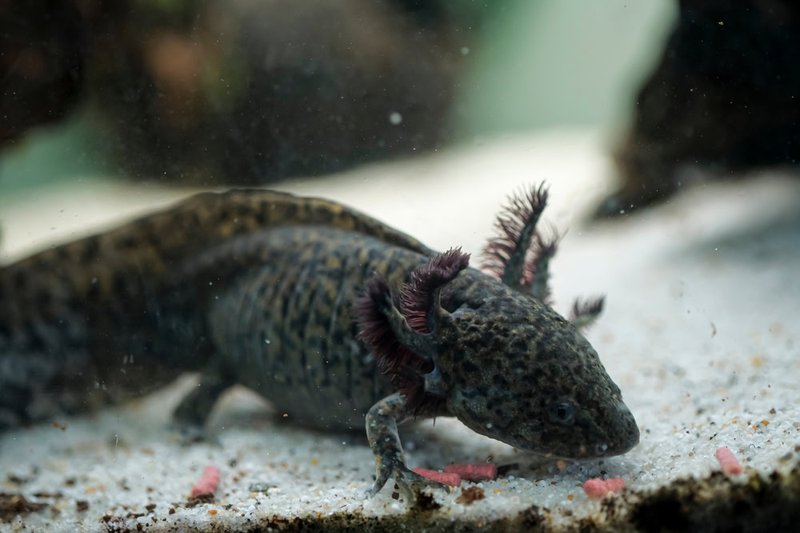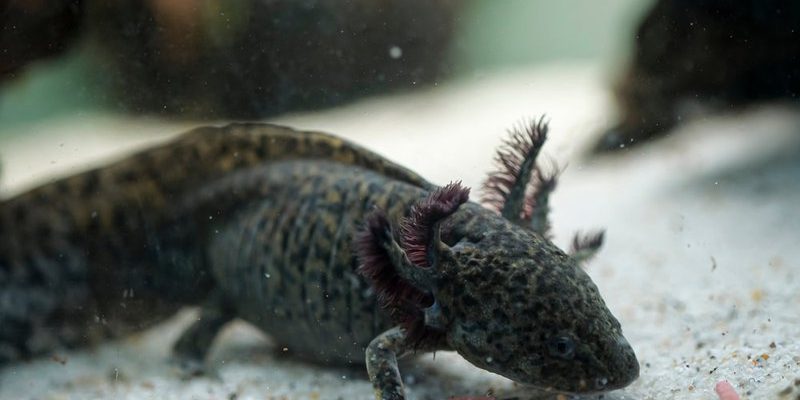
But here’s the catch—you won’t find axolotls just anyone. They’re mostly found in specific lakes in Mexico, particularly Lake Xochimilco. That means if you ever plan a trip there, knowing what to look for can make your experience unforgettable. So, let’s navigate the waters and dive into how to identify an axolotl in the wild!
Understanding the Axolotl’s Habitat
To start, you really need to know where to look. Axolotls thrive primarily in freshwater lakes and canals. These areas are often filled with water plants and have a muddy bottom. Lake Xochimilco, for example, is a crucial habitat for them, but its unique ecosystem is under threat due to pollution and urban development.
You might think, “What does this mean for spotting one?” Well, an axolotl is more likely to be found in areas where the water is clean and has plenty of vegetation. If you see submerged plants or clumps of algae, you might be standing right above an axolotl’s home. Picture yourself wandering through a lush garden—only this garden is underwater!
Recognizing the Axolotl’s Appearance
When you finally set your eyes on an axolotl, you’ll know it’s different from any other animal. Adult axolotls can grow to be about 9 to 12 inches long, with a slender body and a flat head that looks almost cartoonish.
One of their most striking features is their external gills, which resemble feathery fans sprouting from the sides of their head. These gills can be pink or dark in color, depending on the individual’s genetic makeup. The rest of their bodies can vary widely in color, ranging from dark brown to albino pink or even golden. Imagine spotting a bright, vibrant flower blooming amidst a field of grass—this is what finding an axolotl can feel like.
Other Physical Traits to Note
Aside from their gills, look for these characteristics:
- Eyes: Axolotls have small, lidless eyes that can sometimes appear quite dark.
- Limbs: They possess four legs with four toes on each front leg and five on each back leg, giving them a frog-like appearance.
- Tail: Their long, flat tails are often used for swimming, adding to their unique look.
Getting a clear view of these details can help you confirm if you’ve indeed spotted an axolotl or just another fish swimming by.
Behavioral Signs of Axolotls
Now that we’ve covered what they look like, let’s talk about their behavior. Axolotls are generally slow-moving creatures. You might notice them gliding peacefully through the water, often resting on the lake bottom or hiding among the plants.
When disturbed, they may quickly swim away, but more often, they’ll just stay put, making them easier to spot for patient observers. Think of them like that calm friend who doesn’t rush—just hanging out while everyone else is in a hurry.
Time of Day for Spotting
You might be wondering when the best time to look for axolotls is. They are primarily nocturnal, meaning they are most active at night. If you can manage to be out at night, you might catch them moving around more than during the day when they tend to be less active.
So, if you’re planning an adventure, bring a flashlight and take a night stroll along the edges of those murky canals or lakes where they reside.
The Importance of Conservation
Identifying an axolotl isn’t just about the thrill of spotting a rare creature. It also opens the door to important conversations about conservation. Sadly, axolotls are critically endangered due to habitat loss, pollution, and invasive species. By understanding where they live and how to identify them, you’re becoming a part of the solution to protect them.
Each time someone spots an axolotl in the wild, it raises awareness and underscores the need to preserve their habitats. It’s like being a guardian of a secret treasure—your knowledge can help protect these magical creatures.
How to Respect Their Environment
If you do find yourself lucky enough to spot an axolotl, remember to respect their environment. Here are some tips on how to do this:
- Follow local guidelines: Always stick to marked paths and observe from a distance.
- Avoid pollution: Don’t litter or leave behind anything that could harm their habitat.
- Spread awareness: Share your experiences with friends or on social media to help raise awareness about their plight.
Being a responsible observer not only helps protect axolotls but also enhances your experience witnessing them in the wild.
Finding an axolotl in the wild is more than just a simple identifier; it’s a chance to connect with nature and appreciate one of the most fascinating creatures on our planet. From understanding their habitat and recognizing their physical traits to respecting their environment, each step you take contributes to a larger narrative of conservation.
So, whether you’re planning your next trip to Mexico or just curious about these incredible amphibians, keep the tips above in mind. Who knows? You might just find yourself enchanted by an axolotl—a true testament to nature’s wonder! Happy spotting!

